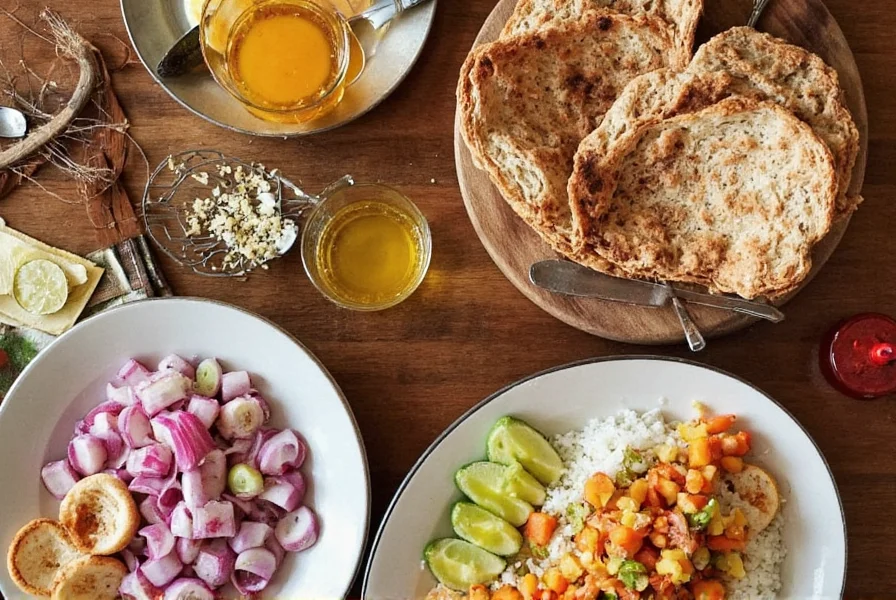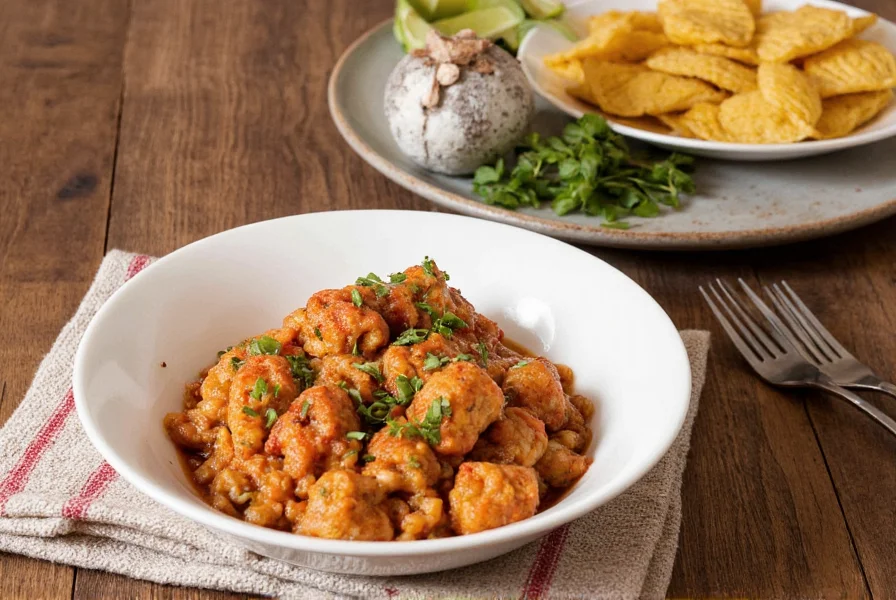Feast or Fizzle? Exploring the Spicy Secrets of Brazilian Traditional Food!
Table of Contents
- A Fiery Introduction to Brazilian Flavors
- The Spice That Defines Brazil
- Top 5 Must-Try Brazilian Dishes
- Spice Profiles & Flavor Layers
- Buying Guide: Essential Spices for Brazilian Cooking
- Home Chef Tips: Bringing Brazil to Your Kitchen
- Final Thoughts: Why Brazilian Food Deserves a Spot on Your Plate
A Fiery Introduction to Brazilian Flavors
Brazil isn’t just about samba, sun, and stunning beaches—it’s also a country bursting with bold, vibrant flavors. Brazilian traditional food is an aromatic blend of indigenous roots, African influences, Portuguese colonization, and waves of immigration from Italy, Japan, and the Middle East. It’s a culinary mosaic where spice plays a supporting but vital role in bringing out the depth of flavor.
If you’re new to this cuisine, prepare your palate for a journey filled with heat, sweetness, tang, and umami. Unlike some cuisines that lean heavily on spice for dominance, Brazilian dishes use it more like a well-placed accent—enhancing without overwhelming.
The Spice That Defines Brazil
When it comes to spices in Brazilian cooking, the key players are often fresh, aromatic, and sometimes surprisingly mild. But don’t let that fool you—these ingredients pack flavor in ways you might not expect.
| Spice | Flavor Profile | Dish Examples |
|---|---|---|
| Cumin | Earthy, smoky, warm | Feijoada, grilled meats |
| Coriander (Cilantro) | Fresh, citrusy | Moqueca, farofa |
| Pimenta-do-Reino (Black Pepper) | Sharp, slightly woody | Classic stews and sauces |
| Malagueta Pepper | Hot, fruity, floral | Vinaigrettes, hot sauces |
| Annatto (Urucum) | Nutty, peppery, mildly sweet | Rub for grilled fish, chicken |
What makes Brazilian cuisine stand out is its balance between fresh herbs and warming spices. While chili heat can be present, especially in regional variations, the true star of the show is the harmony of textures and tastes.
Top 5 Must-Try Brazilian Dishes
Whether you're attending a churrasco or enjoying a cozy Sunday meal at home, these five dishes will give you a real taste of Brazil's rich culinary traditions:
- Feijoada – A hearty black bean stew with pork, slow-cooked to perfection and served with rice, collard greens, and orange slices.
- Moqueca – A seafood lover’s dream, this tomato-based fish stew is infused with coconut milk, annatto, and coriander.
- Pão de Queijo – These addictive cheese puffs are made with cassava flour and feature a soft interior and crispy crust.
- Churrasco – Not just any barbecue—this is a carnivore’s paradise where skewered meats are grilled to order and carved tableside.
- Brigadeiro – The ultimate sweet treat, made with condensed milk, cocoa powder, and chocolate sprinkles rolled into bite-sized balls.
Spice Profiles & Flavor Layers
Understanding how spices work in Brazilian dishes is crucial if you want to replicate them authentically. Here’s a breakdown of common flavor combinations:
- Protein + Cumin + Garlic: This trio forms the base for many meat dishes, including grilled chicken and beef stews.
- Coconut Milk + Coriander + Tomatoes: Found in moqueca and other coastal recipes, this combo delivers a creamy, aromatic profile.
- Lime + Salt + Chili: Simple but powerful, especially in vinaigrettes and condiments like molho de pimenta.
- Onion + Bell Peppers + Bay Leaves: Adds sweetness and depth to rice dishes and beans.
- Annatto Oil + Lime Juice: A bright marinade that enhances the color and aroma of grilled seafood and chicken.

Buying Guide: Essential Spices for Brazilian Cooking
Want to recreate authentic Brazilian dishes at home? Here’s your essential spice shopping list, along with product highlights and usage tips:
| Product | Features | Best For | Usage Tip |
|---|---|---|---|
| Whole Cumin Seeds | Toasty, earthy aroma; intensifies when toasted | Feijoada, grilled meats, bean soups | Dry roast seeds before grinding to unlock deeper flavor |
| Fresh Coriander (Cilantro) | Leafy green herb with citrus notes | Moqueca, salads, garnish | Add last minute to preserve freshness |
| Ground Black Pepper | Mild heat with woody undertones | All-purpose seasoning | Use freshly ground for best aroma |
| Malagueta Pepper Sauce | Spicy, fruity, complex | Sauces, vinaigrettes, seafood | Add a few drops to finish dishes |
| Annatto Seeds | Reddish-orange hue with nutty, peppery taste | Marinades, oils, stews | Infuse oil by heating seeds gently until golden |
Remember: Freshness matters! Store whole spices in air-tight containers away from light and moisture. Ground spices should be replaced every 6–8 months for optimal flavor.
Home Chef Tips: Bringing Brazil to Your Kitchen
Ready to bring a bit of Brazil to your dinner table? Here are some pro-level tricks to elevate your cooking:
- Toasting is Key: Toast cumin, annatto, and garlic in oil or dry pan to awaken their aromas before adding to dishes.
- Fresh Herbs Can't Be Beat: Use fresh coriander instead of dried whenever possible for authenticity.
- Layer Your Flavors: Build flavor gradually—start with onions and garlic, then add spices, followed by liquids and proteins.
- Don't Skip the Orange: In feijoada, a slice of orange balances the richness and cleanses the palate beautifully.
- Play With Heat: If you love spicy food, try adding sliced malagueta peppers or store-bought hot sauce at the end.
Final Thoughts: Why Brazilian Food Deserves a Spot on Your Plate
Brazilian traditional food offers more than just great taste—it tells a story of culture, community, and resilience. From the smoky warmth of cumin to the zesty punch of malagueta peppers, each spice plays a unique role in shaping the identity of Brazilian cuisine.
So whether you're throwing a weekend feast or simply experimenting with global flavors, Brazilian food is worth exploring. Armed with the right spices and a few insider tricks, you can turn your kitchen into a mini Carnaval of flavor.












 浙公网安备
33010002000092号
浙公网安备
33010002000092号 浙B2-20120091-4
浙B2-20120091-4